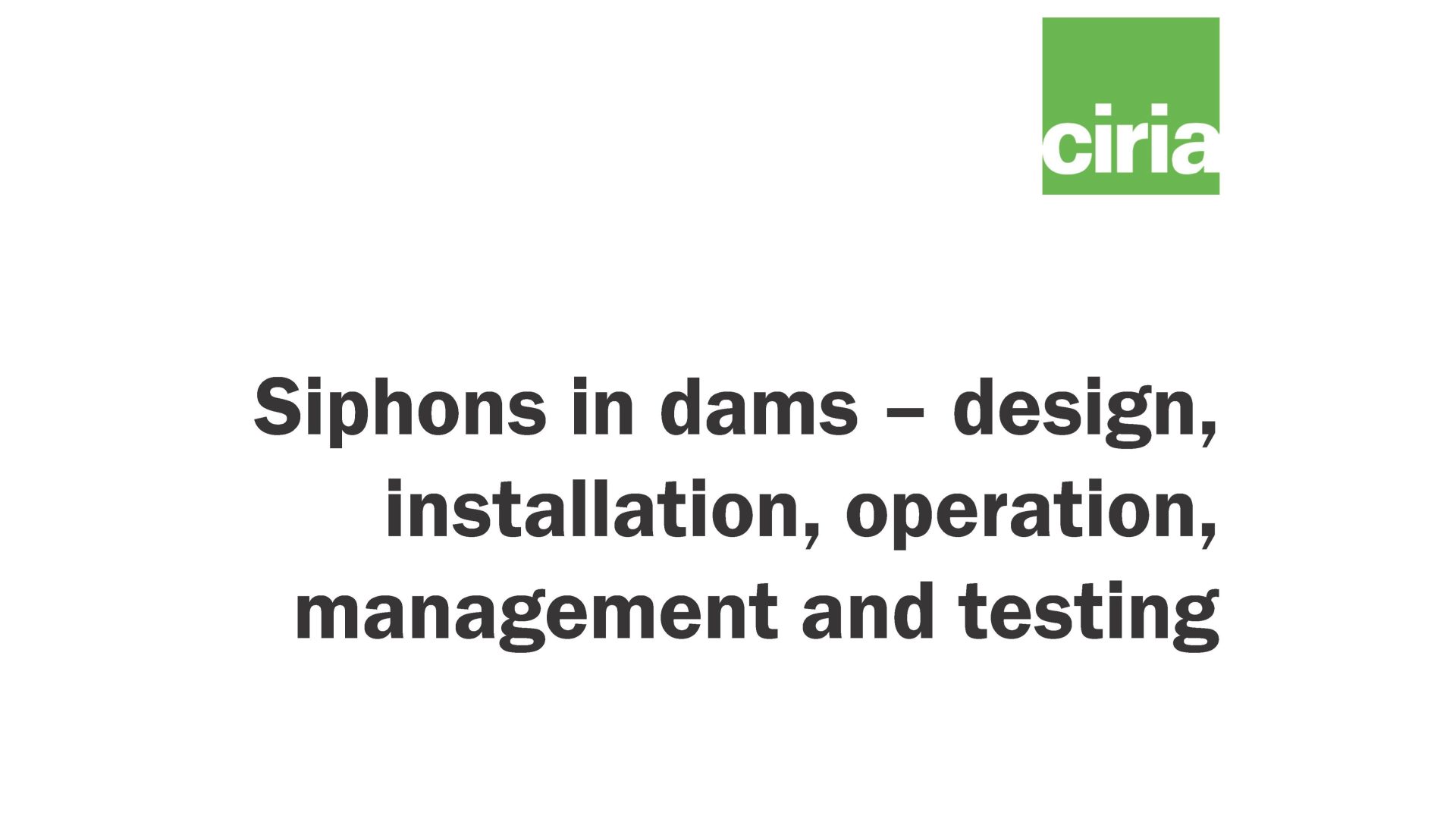CIRIA has announced new guidance for Siphons in dams – design, installation, operation, management and testing (C813).
With an increasing focus on enhancing drawdown capabilities at existing reservoirs and a general shift towards permanent facilities over temporary arrangements such as pumps, the need for comprehensive guidance in this area has grown significantly.
This new CIRIA publication addresses the demand for comprehensive information and guidance, offering valuable insights into the design and installation of retrofitted siphons at reservoirs while covering aspects of operation, maintenance, inspection, and testing, all of which can be applied to existing facilities. The primary intention is to provide design teams with guidance on developing appropriate systems that suit their intended purposes.
This guide will be of particular interest to reservoir managers, dam operators, inspecting, supervising and design engineers, siphon manufacturers and suppliers.
John Foster, Technical Principal, Mott MacDonald and author of C813, stated:
“The demand for a guide of this nature for siphons in dams has been driven in part by a focus on available drawdown provision at existing reservoirs. Siphons provide a permanent facility which is preferred to an overreliance on temporary arrangements such as pumps. The focus of the guide is to support reservoir safety engineers, professionals and owners on designing and installing siphons at existing reservoirs to provide additional drawdown capacity. The guide goes further than design and installation and also covers their operation, maintenance, inspection and testing which can be applied to existing arrangements.”
Dirk Vennix, Chief Executive, CIRIA, commented:
“We are delighted to announce the publication of the much-anticipated siphons guide. It builds on a strong back catalogue of related guidance such as Grouting in dams and reservoirs (C774) and Pipework, valves and associated equipment in dams (C789). Given the demand for the design and installation of retrofitted siphons to provide additional drawdown capacity at existing reservoirs, there was huge interest in providing a standalone guide focusing on siphons in dams. All sites have unique challenges relating to location, construction, and operational requirements so no ‘one-size-fits-all’ arrangement is applicable. This guide provides good practice guidance to design teams on how to develop an appropriate system which is fit for purpose and will address those unique challenges. CIRIA is thankful to the authoring team and the vast majority of water utilities, including all devolved administrations, for helping us to make this publication happen.”



